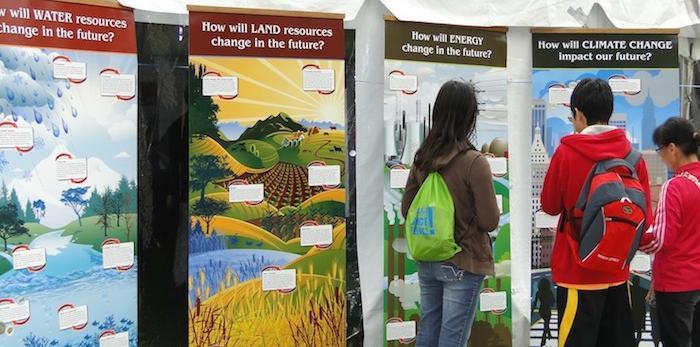
History
The Center for Global Change Science has tackled some of the most complex global challenges since its inception in 1990. Led by TEPCO Professor of Atmospheric Science Professor Ronald Prinn, the Center was originally part of the School of Science’s Department of Earth, Atmospheric and Planetary Sciences. It later outgrew its roots and became an independent center in 2006.
In its quest to improve scientific understanding of the global climate system, Director Ron Prinn realized in the Center’s early days the need to better incorporate the human system (e.g., population, GDP, energy use, etc.) into analysis. Joining hands with environmental economist Henry Jacoby from MIT’s Sloan School of Management, the two formed the Joint Program on the Science and Policy of Global Change in 1991. The program has since excelled in combining natural and social sciences through the MIT Integrated Global System Model (IGSM). Soon after launching the Joint Program to focus on integrated assessments, the Center also launched a program focused on ocean-atmosphere-climate interactions. The Climate Modeling Initiative was born in 1993 and developed the MIT General Circulation Model (MITgcm).
The Center’s director, Ron Prinn, became the head of the Department of Earth, Atmospheric and Planetary Sciences in 1998. His tenure lasted until 2003. In that time, as climate change increasingly became a topic of much doubt amongst the general public, Prinn and colleagues conceived of a way to better convey uncertainty in climate change prediction. The Greenhouse Gamble wheels were first unveiled by the then-President of MIT Charles M. Vest on May 1, 2001. The roulette-style spinning wheels depict the estimated probability, or likelihood, of potential temperature change. They continue to be a hallmark communication device.
Over the last decade, the Center’s history has been marked by several new research programs that expand and complement our work. First, in 2002, the Earth System Initiative was launched to work in tandem with the Center for Global Change Science and forge a better understanding of how the Earth functions from the molecular to the global scale. Around the time that the Center became independent from the department in 2006, MIT also created a new platform for highly focused energy-related activity: the MIT Energy Initiative. The Center works alongside the Energy Initiative to better communicate the interrelationships between energy and the environment. Also, in 2007, some of the Center’s researchers came together to form the Darwin Project, which is dedicated toward better understanding the relationships between climate change, marine ecosystems and the ocean carbon cycle. Most recently, the Center expanded its global reach and began working with the Rwandan Ministry of Education to build the first climate observatory station in Africa – which will be part of the Advanced Global Atmospheric Gases Experiment (AGAGE).
As the hub for environmental science throughout MIT and the world, the Center for Global Change Science continues its role in providing cutting-edge research and a training ground for the next generation of leaders. While MIT explores the creation of a robust Institute-wide collaboration centered on the environment, we look forward to providing the research basis through which the Institute can elevate and expand its leadership in this critical area of study.


